How the Great Famine Shaped the Destiny of Irish Beer
The mid-19th century was a pivotal era for Ireland, marked indelibly by the Great Famine, a catastrophic event that reshaped the nation’s demographic, economic, and cultural landscapes. Between 1845 and 1852, Ireland faced an unparalleled disaster as a potato blight ravaged the country, decimating the primary food source for the majority of the population. This calamity led to approximately one million deaths and the emigration of more than a million people, seeking refuge from starvation and disease. Amidst this backdrop of despair, an industry quietly mirrored the resilience and adaptation of the Irish people: brewing.
Before the famine, Ireland boasted a robust brewing industry, with beer being a staple of the Irish diet and breweries playing a central role in local economies. However, the famine’s impact extended far beyond immediate food scarcity; it led to a comprehensive transformation of Irish agriculture, labour, and industrial practices. Remarkably, the brewing sector not only weathered this storm but emerged transformed, adapting to new challenges and evolving in ways that would influence its trajectory for generations to come.
We will explore this fascinating journey, tracing the lineage of Irish brewing through the famine’s shadow. It examines how an industry tethered to the land and its people managed to find innovative pathways to survive, and eventually thrive, amidst widespread suffering and loss. This narrative is not just about beer or the mechanics of brewing; it’s a story of human endurance, cultural identity, and the unexpected ways in which a profound tragedy can shape an industry’s destiny.
Introduction to the Great Famine
The Great Famine, also known as the Irish Potato Famine, was a period of mass starvation, disease, and emigration in Ireland between 1845 and 1852. It is among the darkest chapters in Irish history, fundamentally altering its social and economic fabric. The immediate cause of the famine was a potato disease known as late blight (Phytophthora infestans), which ravaged potato crops throughout Ireland. The potato was the staple food of the population, particularly among the poor, due to its efficiency in providing high yields from the small plots of land available to them. The blight’s arrival turned fields of healthy vegetation into decaying masses of foul-smelling foliage and tubers, with devastating effects on the population reliant on them for sustenance.
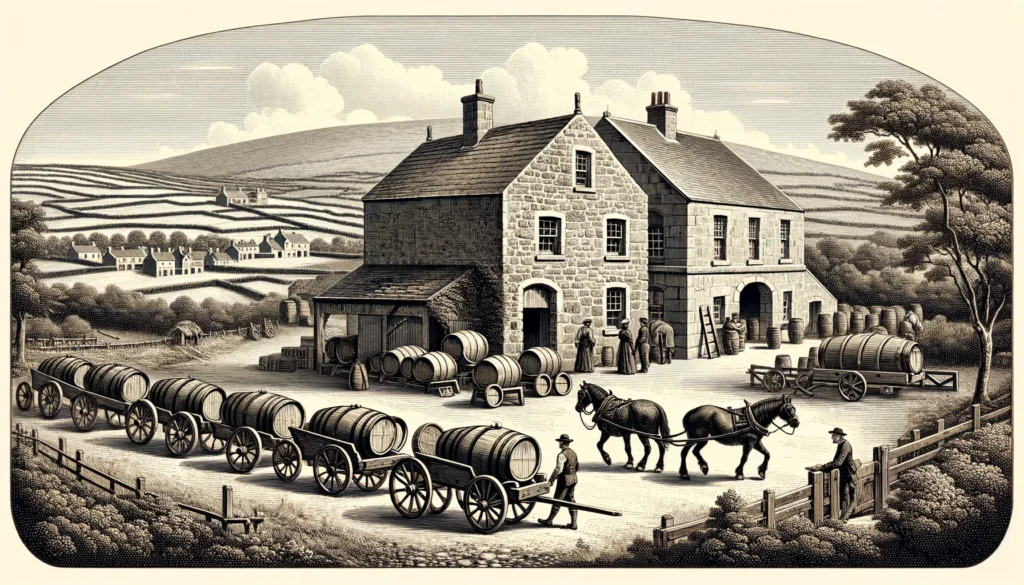
The famine’s impact was catastrophic, with the population plummeting due to death and emigration. An estimated one million people died from starvation and related diseases, while another million emigrated in search of a better life, predominantly to North America and Great Britain. This mass exodus continued well beyond the famine years, contributing to a significant decline in the Irish population that would take decades to recover.
The British government’s response to the crisis remains a subject of historical debate and controversy. Initially, aid efforts were hampered by a combination of insufficient urgency, bureaucratic inefficiencies, and a reliance on laissez-faire economic policies, which many argue exacerbated the famine’s effects. Over time, public works programs were introduced, but these were too little and too late for many of those affected.
Socially and economically, the famine induced profound changes in Ireland. The landscape of Irish agriculture transformed as the cultivation of the potato was reconsidered. The traditional practice of subdividing land among heirs, which had contributed to the proliferation of small, unsustainable plots, was re-evaluated. Moreover, the famine catalysed a shift in Irish society and politics, planting the seeds of movements for land reform and national autonomy that would evolve in the following decades.
The Great Famine also left an indelible mark on the global Irish diaspora, shaping the identity and communities of millions of people of Irish descent worldwide. It is a testament to the resilience and perseverance of the Irish people, whose cultural, social, and political influences continue to resonate far beyond their island’s shores.
The Pre-Famine Irish Brewing Scene
Before the onslaught of the Great Famine, Ireland’s brewing industry was a vibrant and integral part of its economy and culture. The country was renowned for its rich tradition of brewing, with a history stretching back to ancient times. By the 18th and early 19th centuries, this tradition had evolved into a robust industry cantered around the production of stout and ale, beverages that had become synonymous with Irish identity.
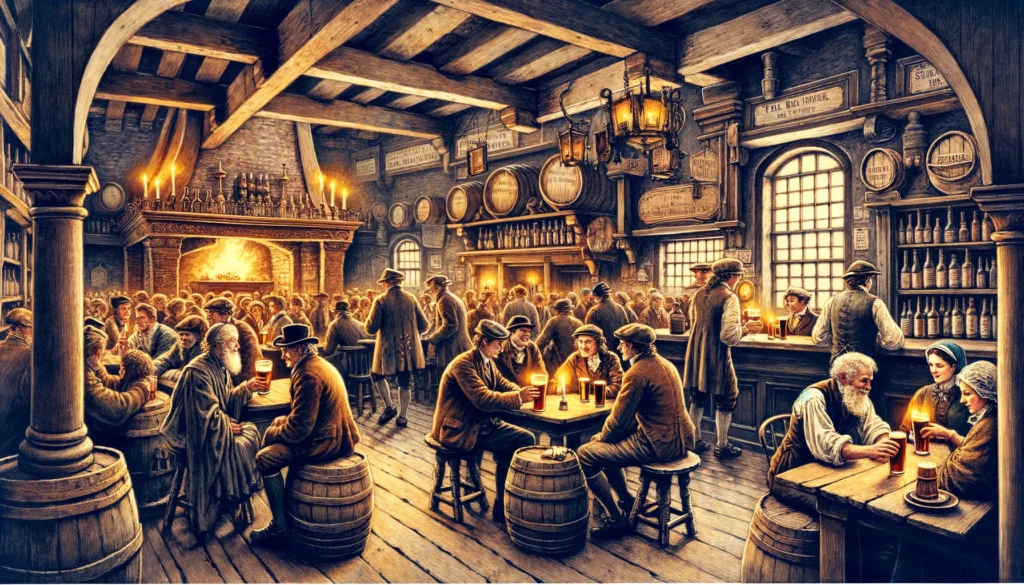
A Flourishing Industry
On the eve of the famine, Ireland was home to numerous breweries, large and small, with Dublin establishing itself as a brewing powerhouse. The most famous among them, Guinness, had already begun to cement its reputation as a global brewing giant. These breweries were not just commercial enterprises; they were vital to their communities, providing employment, supporting agriculture, and fostering a sense of local pride.
Beer: A Staple of Irish Life
Beer in pre-famine Ireland was more than a beverage; it was a dietary staple. The brewing industry thrived partly because beer was considered safer to drink than water, which was often contaminated. Breweries used locally sourced ingredients, such as Irish barley, which fostered a closely-knit relationship between agriculture and brewing. This connection ensured that breweries played a critical role in the local economy, supporting farmers and creating a demand for crops.
The Social Fabric
Pubs and breweries were social hubs, places where news was shared, deals were made, and communities bonded. In a society that was largely rural and agrarian, these establishments offered a rare space for communal gathering and leisure. The brewery and the pub were fixtures in Irish life, symbolizing stability and continuity in the face of socio-economic challenges.
Challenges on the Horizon
However, this flourishing scene was not without its challenges. Even before the famine, Ireland faced economic difficulties, including restrictive trade laws imposed by Britain that hampered the export of Irish beer. Additionally, the domestic market was highly competitive, with breweries vying for the loyalty of a populace that was, despite the prevalence of beer, still relatively poor. These challenges foreshadowed the industry’s vulnerability to broader economic and social upheavals.
A Premonition of Change
As the famine approached, the brewing industry, like the rest of Ireland, stood on the brink of profound change. Unbeknownst to many, the coming calamity would test the resilience of the brewers and their ability to adapt to a rapidly changing world. The famine would decimate the population, alter agricultural practices, and shift economic dynamics, leaving an indelible mark on the brewing industry and Irish society at large.
In the shadow of impending disaster, the brewing industry’s role in Irish life was about to be redefined. The coming years would see a transformation that would reshape the landscape of Irish brewing, setting the stage for innovation, adaptation, and eventual resurgence.
Impact of the Famine on Brewing
The Great Famine profoundly altered the landscape of Ireland, and its impact on the brewing industry was both immediate and enduring. As the famine ravaged the country, claiming lives and displacing families, it inevitably led to a decline in beer production and consumption. However, the famine’s legacy on Irish brewing extends beyond mere numbers; it influenced agricultural practices, labour dynamics, and consumer preferences, laying the groundwork for a transformed brewing industry.

Agricultural Upheaval
The blight that destroyed the potato crop had wider implications for agriculture, affecting the availability of barley and hops, essential ingredients in brewing. With the collapse of the potato, some land was repurposed for alternative crops, including barley. However, the overall disruption to agriculture, coupled with the emigration and death of a significant portion of the rural workforce, meant that breweries faced challenges in sourcing local ingredients, leading to increased costs and changes in beer quality.
Changing Workforce
The famine resulted in a profound loss of life and led to mass emigration, drastically reducing Ireland’s population. For breweries, this meant a shrinking domestic market and a diminished labour force. The loss of skilled workers and a decline in disposable income among the population forced breweries to adapt their operations, often automating processes or downsizing their output to survive the challenging economic conditions.
Shifts in Consumer Demand
The famine also altered consumer preferences and drinking habits. With the general impoverishment of the population, the demand for beer declined, as many could no longer afford what had once been a staple of their diet. Additionally, the trauma of the famine led some to abstain from alcohol altogether, further shrinking the market. Breweries responded by diversifying their offerings, including producing cheaper, weaker beers to cater to the changed economic circumstances of their clientele.
Brewery Adaptations and Innovations
In the face of these challenges, breweries were forced to innovate to survive. Some turned to exporting their products, finding new markets abroad, particularly among the Irish diaspora in the United States and Britain. Others focused on improving the efficiency of their operations or experimenting with new brewing techniques and ingredients to create beers that could appeal to a broader audience or be produced at a lower cost.
The Foundation for Future Growth
Despite the hardships, the famine indirectly laid the foundation for the modernization and eventual resurgence of the Irish brewing industry. The period of adversity forced breweries to rethink their strategies, leading to innovations in brewing technology and marketing that would serve them well in the years to come. Moreover, the diaspora created a global network of Irish emigrants, fostering an international appetite for Irish beer that continues to this day.
The Great Famine’s impact on Irish brewing was profound, reflecting the broader transformations that the catastrophe wrought on Irish society and economy. However, through resilience and adaptability, the industry not only survived but eventually thrived, evolving in ways that would have been unimaginable before the famine struck.
Resurgence and Evolution of Irish Brewing Post-Famine
In the aftermath of the Great Famine, Ireland faced a long and arduous road to recovery. The brewing industry, like many other sectors, had been deeply affected by the crisis. However, the latter half of the 19th century and the early 20th century witnessed a remarkable resurgence and evolution in Irish brewing, fuelled by innovation, adaptation, and an enduring spirit of resilience.

The Slow Road to Recovery
The immediate post-famine years were challenging for Irish brewers. The domestic market had contracted significantly, and the loss of skilled labour and agricultural disruption continued to impact production. However, as Ireland gradually recovered, so too did its thirst for beer. The turn of the century saw a gradual but steady increase in demand, both domestically and internationally, signalling a new era for Irish brewing.
Innovations in Brewing
The necessity brought about by the famine years led to innovations that would redefine the brewing industry. Advances in technology, such as refrigeration and steam power, were adopted, improving production efficiency and beer quality. The industry also saw the introduction of new brewing techniques and styles, adapting to changing tastes and market demands. These innovations not only helped breweries recover but also set the stage for future growth.
The Rise of Export Markets
One of the most significant developments in the post-famine brewing industry was the expansion of export markets. Irish brewers, notably Guinness, began to look beyond Ireland’s shores, capitalizing on the diaspora to build a global brand. By the late 19th and early 20th centuries, Irish stout had become renowned worldwide, with exports playing a crucial role in the industry’s resurgence.
The Emergence of New Breweries and Beer Styles
The late 19th and early 20th centuries also saw the emergence of new breweries and the diversification of beer styles in Ireland. While stout and ale remained popular, brewers began experimenting with different types of beers, responding to global trends and local preferences. This period of experimentation and innovation added depth and variety to the Irish beer landscape.
A New Identity for Irish Beer
The resurgence of the brewing industry contributed to the formation of a new identity for Irish beer, one that was deeply rooted in the country’s history and culture yet forward-looking and innovative. This identity was bolstered by the marketing efforts of breweries, which began to emphasize the quality, tradition, and Irish heritage of their products. As a result, Irish beer not only reclaimed its place at home but also carved out a space on the global stage.
The post-famine era marked a significant turning point for Irish brewing. From the ashes of adversity, the industry not only recovered but also embarked on a path of growth and evolution that would see Irish beer achieve global recognition. This remarkable journey from adversity to resurgence underscores the resilience and adaptability of the Irish brewing tradition, a testament to the enduring spirit of those who navigated the industry through its darkest days and into a future bright with possibility.
Legacy of the Famine in Modern Irish Brewing
The Great Famine was a defining moment in Irish history, leaving a profound impact on the nation’s psyche, its people, and its industries. The brewing industry, in particular, has carried the legacy of this period into the modern era, weaving the resilience and adaptability it fostered into the very fabric of its identity. This section explores how contemporary Irish brewing honours its past while looking to the future, demonstrating the indelible mark of the famine on the industry.
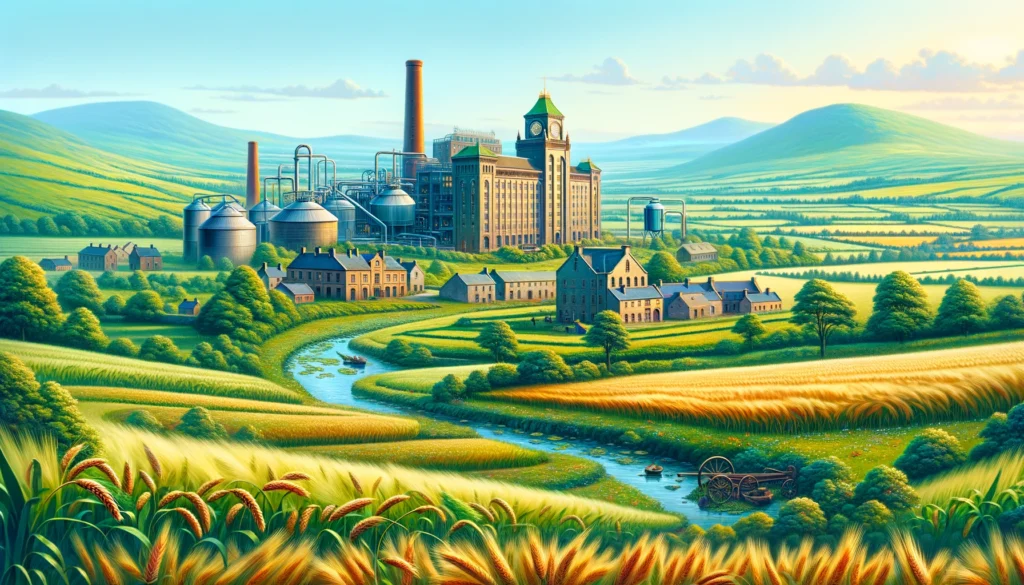
Honouring Tradition Through Innovation
Today’s Irish breweries blend tradition with innovation, paying homage to their history while embracing modern brewing techniques and global trends. This duality is a direct result of the post-famine evolution of the industry, a period that demanded adaptation to survive and thrive. Contemporary brewers draw inspiration from the past, crafting beers that reflect the rich heritage of Irish brewing, while also experimenting with new ingredients, styles, and production methods.
The Global Reach of Irish Beer
The legacy of the famine includes the widespread Irish diaspora, which has played a crucial role in promoting Irish beer worldwide. Brands like Guinness have become symbols of Irish identity globally, thanks in part to the emigrants who carried their love for these beverages abroad. The international success of Irish beer is a testament to the enduring connection between Ireland and its global community, a relationship strengthened through shared history and culture.
Sustainability and Community Engagement
Modern Irish breweries are increasingly focused on sustainability and community engagement, values that echo the communal spirit of pre-famine Ireland. Many breweries utilize locally sourced ingredients, support local farmers, and invest in environmentally friendly practices. This commitment to community and sustainability reflects a broader understanding of the interconnectedness of brewing with local economies and ecosystems, a lesson underscored by the historical challenges faced by the industry.
Educational Initiatives and Cultural Preservation
The story of Irish brewing, particularly its trials and transformations following the famine, is an integral part of Ireland’s cultural heritage. Breweries and beer museums across the country offer educational programs, tours, and tastings designed to preserve and share this history. Through these initiatives, the industry contributes to the ongoing education about the famine’s impact, ensuring that the lessons of the past continue to inform the future.
A Symbol of Resilience and Pride
Irish beer has become a symbol of resilience and national pride, embodying the spirit of a people who have overcome adversity time and again. The industry’s journey from the depths of the Great Famine to international acclaim is a powerful narrative of perseverance, creativity, and community. It serves as a reminder of the strength found in adversity and the potential for renewal and growth in the face of challenges.
The Great Famine’s legacy in modern Irish brewing is multifaceted, reflecting the industry’s historical depth, its capacity for innovation, and its commitment to community and sustainability. As Irish breweries continue to evolve, they carry forward a heritage shaped by hardship, a testament to the indomitable spirit of Ireland and its people.


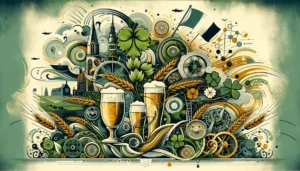
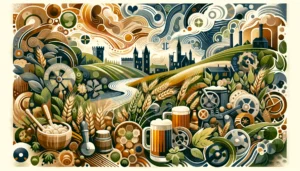

Be First to Comment